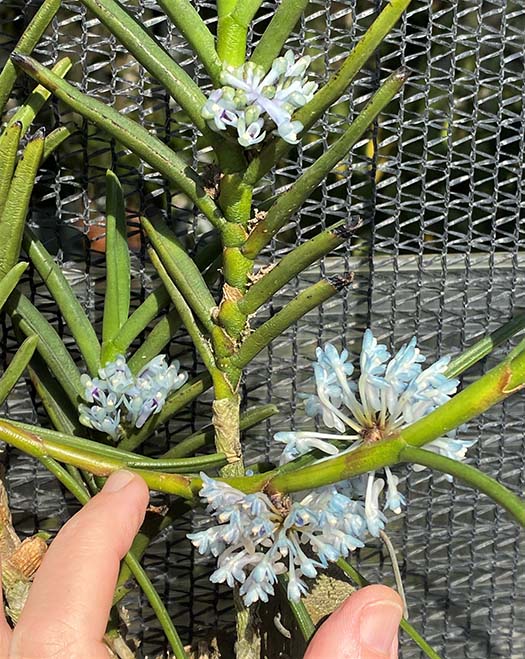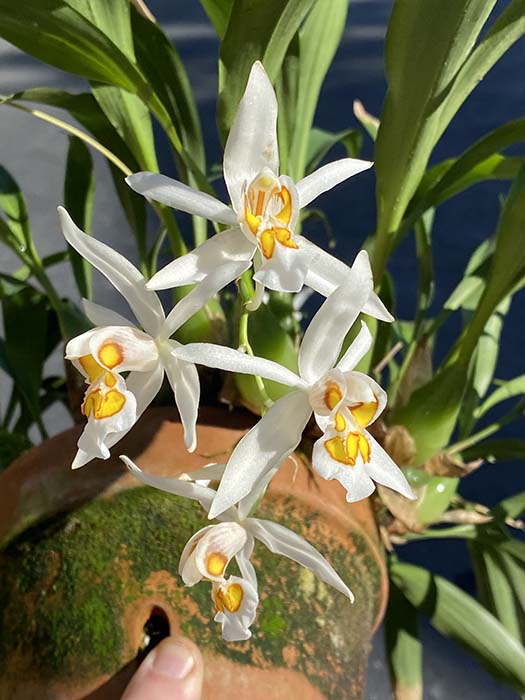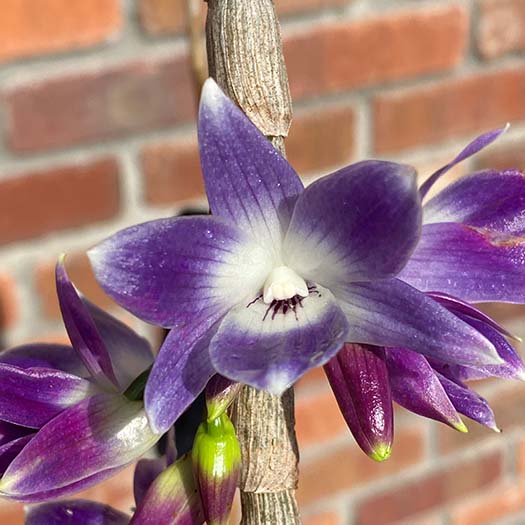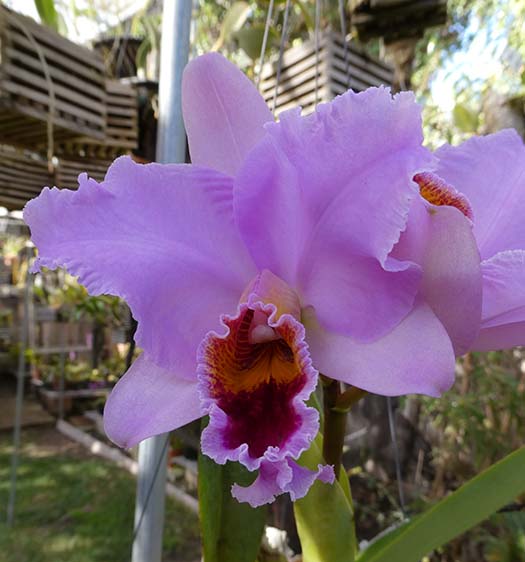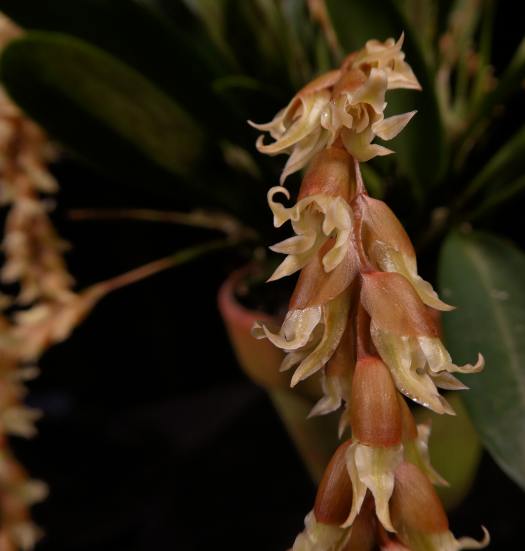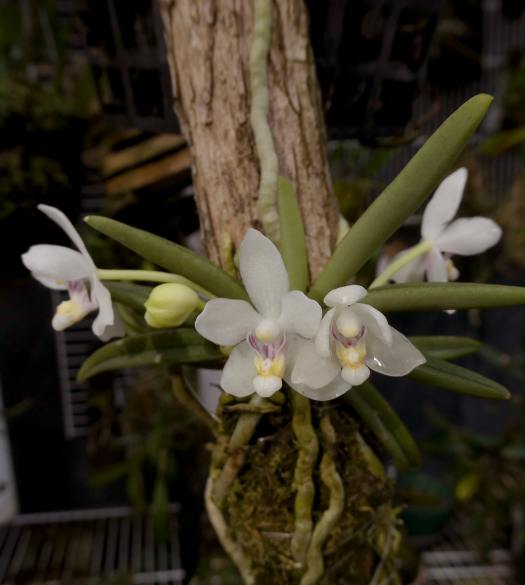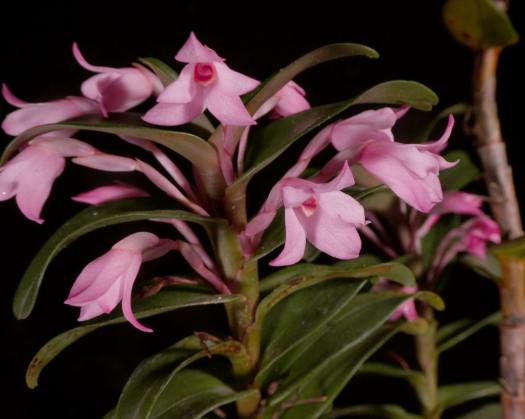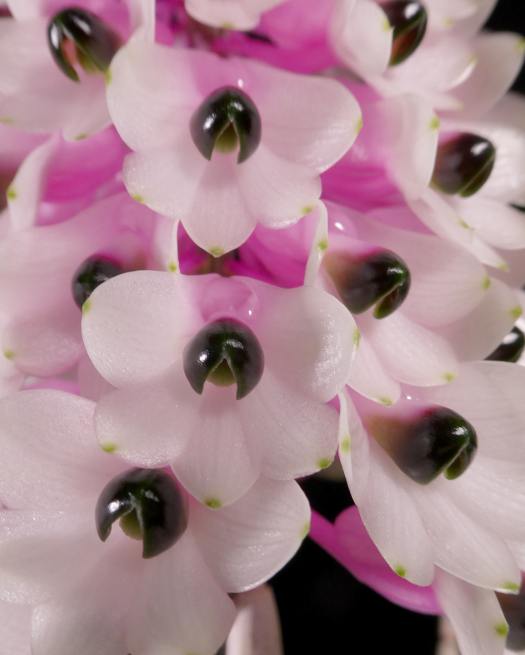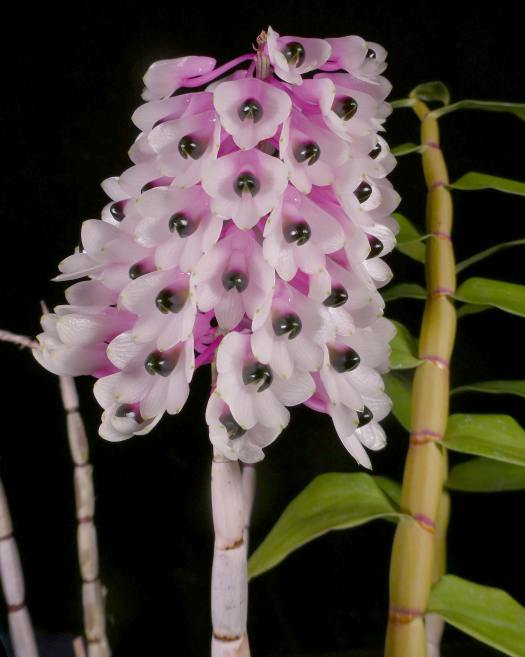December 2021
From Scott McGregor:All orchids grown outdoors, coastal southern California |
|
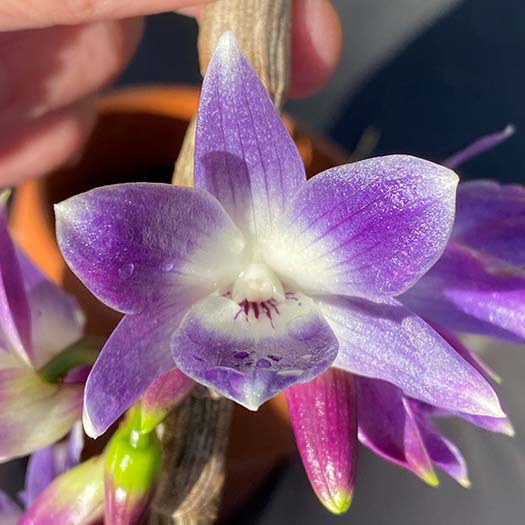 |
|
Dendrobium victoria-reginaeBlue-violet long-lasting flowers, opening a few at a time on old, leafless canes. Prefers cool and moist. |
|
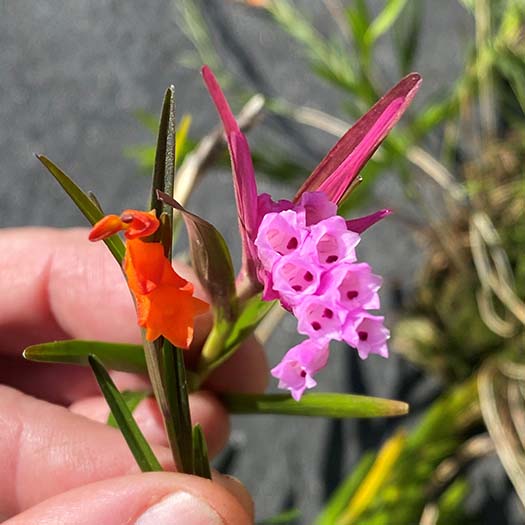
Isochilus aurantiaca and majorIsochilus is a genus with long, grass-like canes, sporting brightly colored flowers at the ends. They usually flush-bloom with many flowing canes all at once, but sometimes you’ll get a single or two. Here are Isochilus aurantiaca and Isochilus major doing an out-of-season appetizer. |
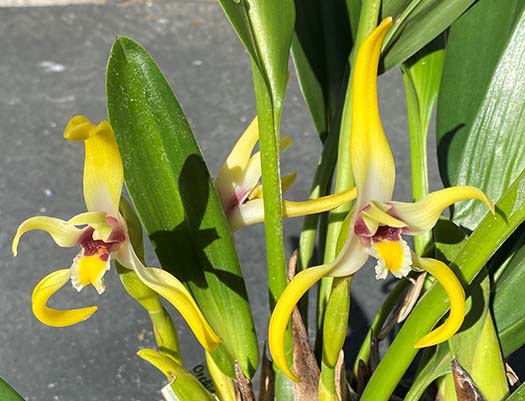
Maxillaria dilloniiMaxillaria is a genus of mostly unremarkable flowers (sorry, Roberta!) (Ed. "De gustibus non est disputandum") on sprawling plants. Maxillaria dillonii is a delightful exception with 3-4” showy flowers produced over a long period of time on largish plants that stay compact and well-behaved, and is easy to grow outdoors. |
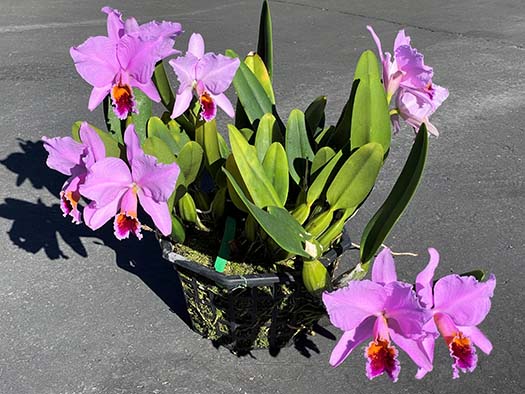
Cattleya percivaliana 'Summit' FCC/AOSEasy to grow outside, big showy flowers on compact plants, reliably blooms around the holidays—what’s not to like? |
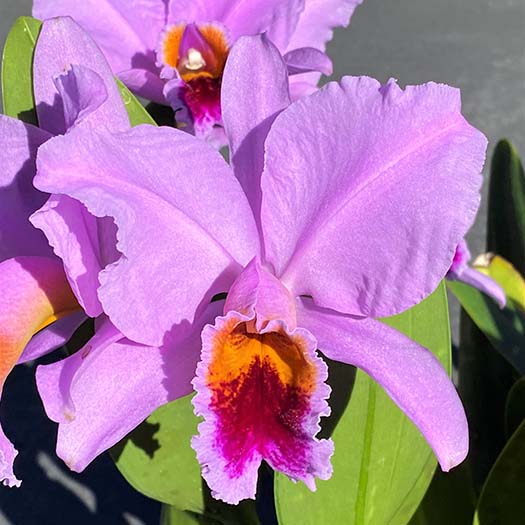 |
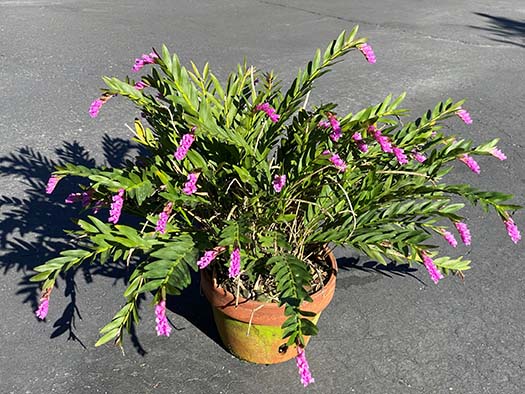
Isochilus species 'Oz' (possibly I. major)I originally bought this as an unidentified Columbian species “oz” from Andy and he told me later it was probably “major”, although it looks a bit different from the I. major that I got from the Santa Barbara Orchid Estate. Anyway, it is an easy outside grower that grows into a specimen plant (the one pictured is about 30” in diameter). The flowers are small but there are a lot of them and they are bright magenta. Strong hummingbird magnet! |
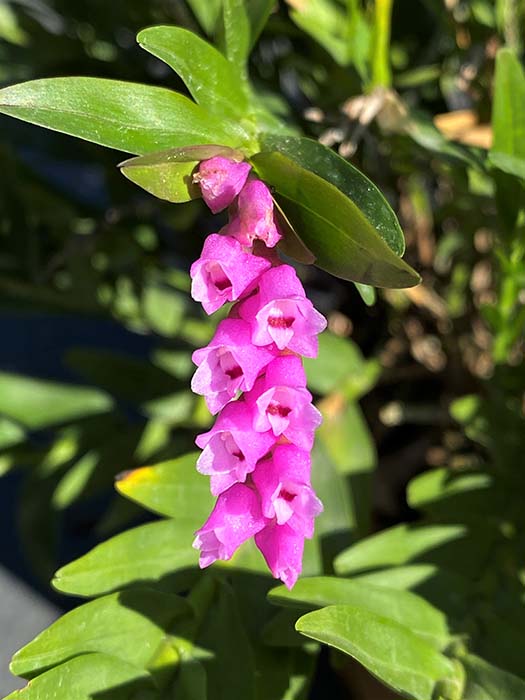 |
From Roberta Fox:
|
|
Outside in the Back Yard: |
|
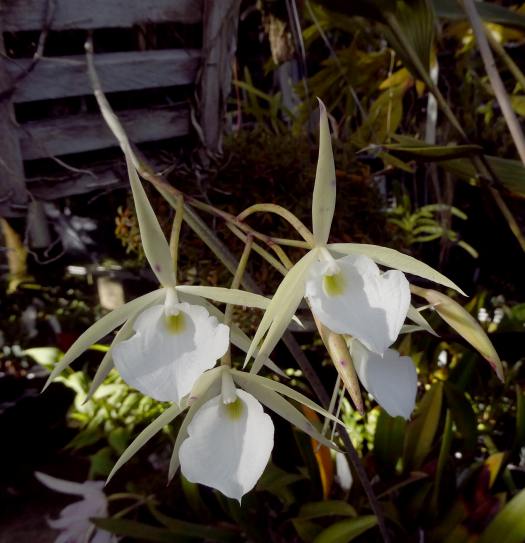
Brassavola perriniiI had been growing this in the greenhouse, then research indicated that it was a cool grower. It has been doing very nicely outdoors. It was on a fairly small piece of cork which it outgrew, so I put the whole thing into a wood basked, hung sideways. The new growth has emerged from the back side of the mount, out of the slats of the basket. It fragrant, mostly in the evening. |
Cleisocentron gokusingiiDistinguised from Cleisocentron merrillianum by its shorter, semi-terete leaves. Flowers are similar, a truly BLUE orchid. It blooms 2 or 3 times per year. When blooming in summer, the color is a rather washed-out blue-gray. In cooler weather the color is much better, and this one has benefited from our unsually cool fall. |
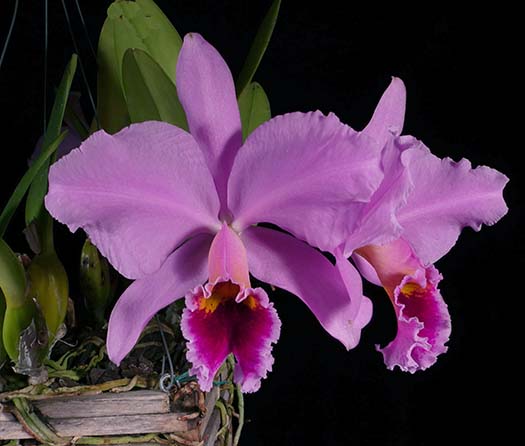
Cattleya percivalianaA sure sign of the approaching holidays. This colorful Cattleya blooms reliably this time of year. Some people don't find its light fragrance particularly pleasing, I notice very little and I don't have a problem with it. I love the intense colors of the lip. I have shown the photo of Scott's plant to mine, to perhaps inspire it to get bigger! |
|
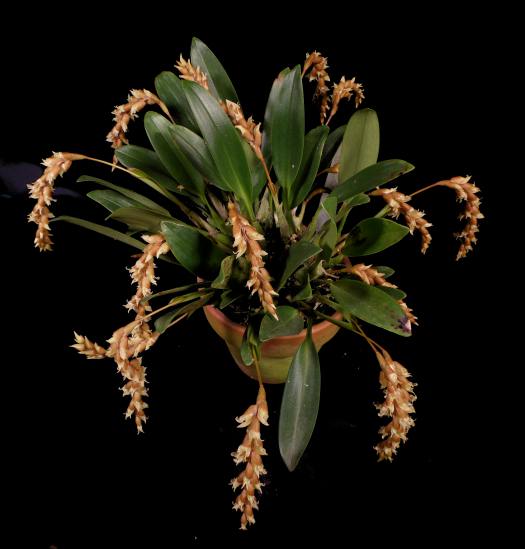 |
|
Dendrochilum cootesiiFlowers are relatively large for the genus, on a smal plant. That is a 4 inch pot. Each year it produces more spikes. The inflorescences have a subtlle twist that is very hard to capture in a photo. The dorsal sepal had a cute upward curl. |
|
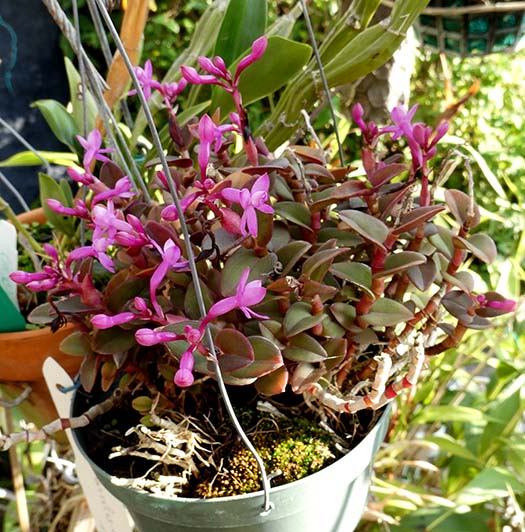 Epidendrum quisayanumPlentiful, long-lasting flowers. |
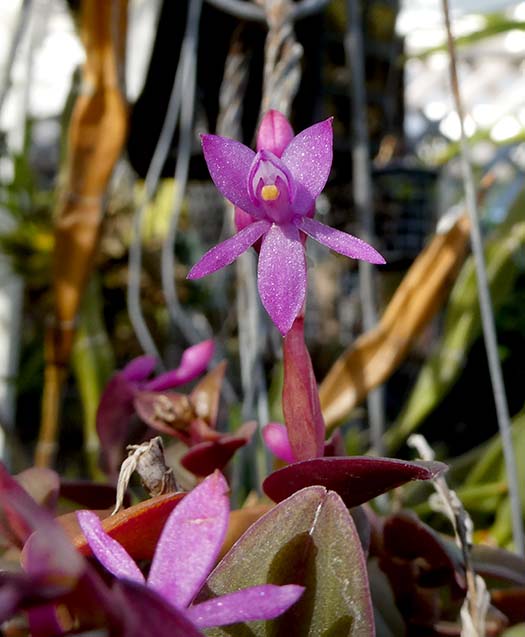 |
Lycaste skinneri (virginalis) - typicalPetals are a subtle pink. This is the foundation species for many lovely hybrids. Small amounts of other species are bred in for various characteristics, but Lyc. skinner is dominant, and a high percentage in most of them. |
Lycaste skinneri (virginalis) ssp. ipalaFlowers are creamy white, lip is intense red. It is somewhat more floriferous than the typical form. |
Cattleya (Laelia) colnagoiOne of the rupiculous Laelias. They need very bright light (full sun if possible) and ideally should be somewhat protected from winter rain. |
Cattleya (Laelia) sanguilobaThis is my most robust and vigorous rupiculous Laela. |
Diplocaulobium aratriferumThese lovely starry flowers last only one day, or even less. They also are mysterious - multiple plants bloom at the same time. Scott has observed this with several of his plants blooming simultaneously, but we have noted that on several occasions, we have both recorded these ephemeral flush blooms on the same day. This one followed the pattern... Scott was away on the particular day, came back the next day and indeed his had bloomed on the same day as mine. We live 30 miles apart. How do they do that??? We have both searched for an external trigger that might be responsible - weather, air pressure, phase of the moon, anything we measure - but we have found no consistent pattern. |
|
Maxillaria ubatubanaThis Brazillian species is a flower machine. It is related to Max. picta (a spring bloomer). Flowers are bright yellow in front, but the backs are creamy white with spots. The plant is very vigorous and is starting to climb out of the bulb pan, probably time to divide and repot. |
|
Isochilus sp.Andy Phillips now thinks that this may be Isochilus major. Other plants of Isochilus major are not as bushy as this one, though. It is a very reliable and floriferous bloomer. As Scott pointed out, definitely a hummingbird magnet. After the blooms fade, it usually is full of seed capsules. |
|
Laelia furfuraceaFrom Mexico, this one is still Laelia. |
Laelia ancepsThe first one of this wonderful species to bloom for me. With a bunch of different plants, I expect L. anceps season to extend into January and maybe February this year, in response to a rather cool summer and fall. All of the Mexican Laelias need to dry out between waterings. They get watered frequently along with the rest of the plants, but are in open baskets (or smaller ones mounted) so that they dry quickly even if watered every day in summer. |
Laelia superbiensThis spike is about 4 feet, the one behind it that is yet to open is closer to 5 feet. The throat with its bright yellow keels and stripes to guide the pollinator are distinguishing features. This species is majestic! |
|
Cattleya (Sophronitis) cernua (typical)A small plant with brilliant half-inch flowers. Typical inflorescence has 3-4 flowers. Flowers emerge from the new leaves, with no sheath. |
Cattleya (Sophronitis) cernua ssp. mineiraThis subspecies has more star-shaped flowers, with inflorescence producing 5-6 flowers. Leaves are larger than the "typical" form. This is a particularly vigorous plant. |
Laelia rubescens f. roseaThe semi-alba will be along next month. Flowers are delicate, don't last very long, but a robust plant with multiple spikes makes a lovely cloud. See below in the Greenhouse section for the closely-related Laelia aurea. |
|
Zygopetalum maxillareNative to Brazil, Argentina, and Paraguay. It grows relatively shady and damp, has done well in the net pot with spaghnum. It tends to ramble. |
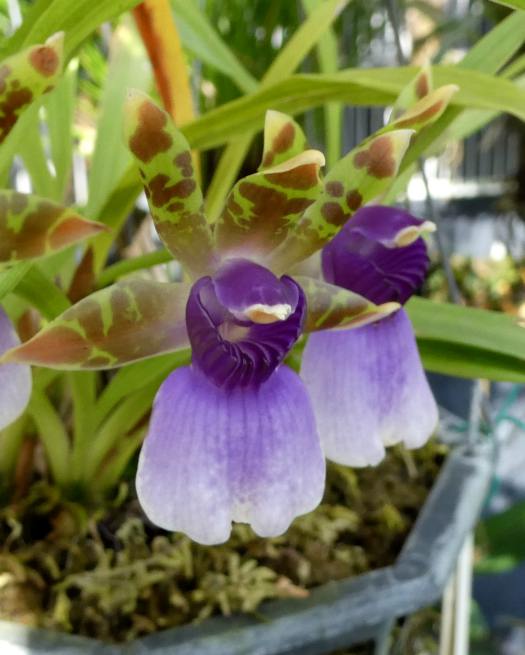 |
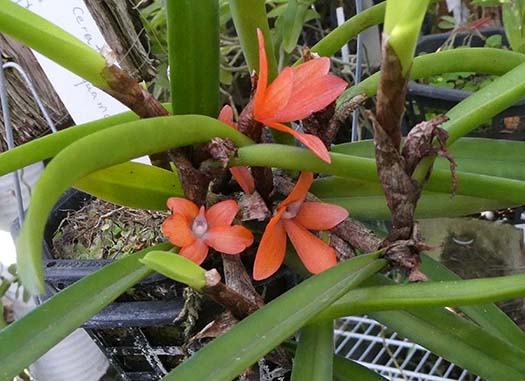
Ceratostylis retisquama (rubra)I showed this one in October, but it is back in bloom. It has a reputation as a warm grower, but it has been through two winters outdoors and is growing very well. |
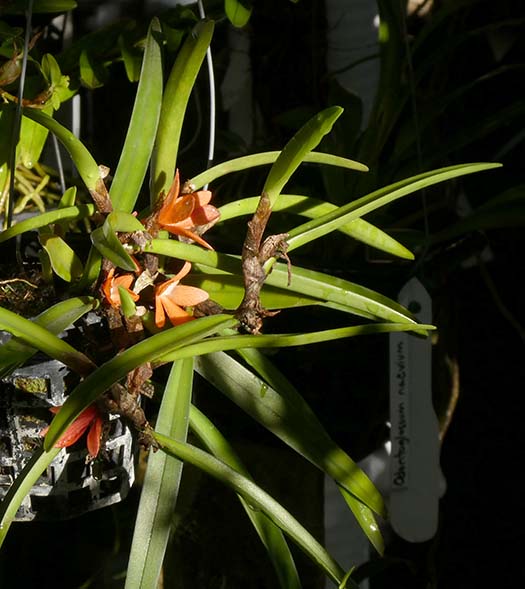 |
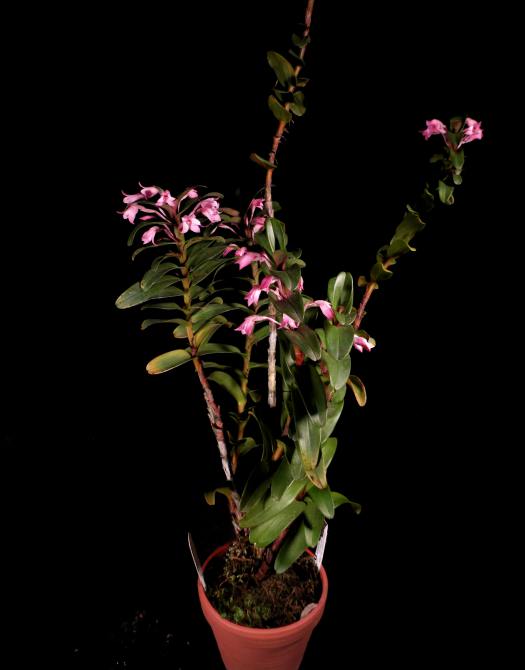 |
|
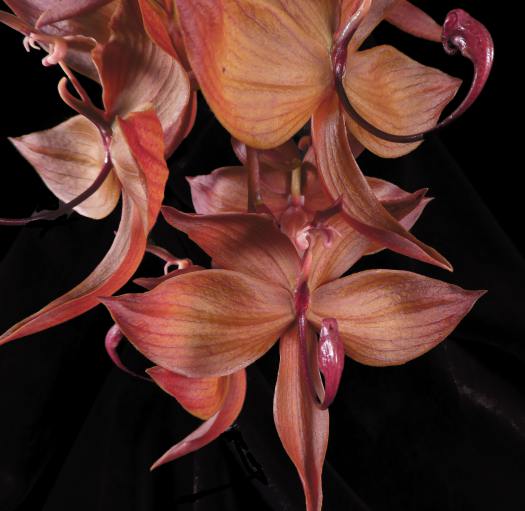 Cycnoches cooperiI have grown this outside all summer. The Catasetinae have now moved into the greenhouse with the cooling nights. Cycnoches (as well as Mormodes) tend to bloom just as dormancy starts. |
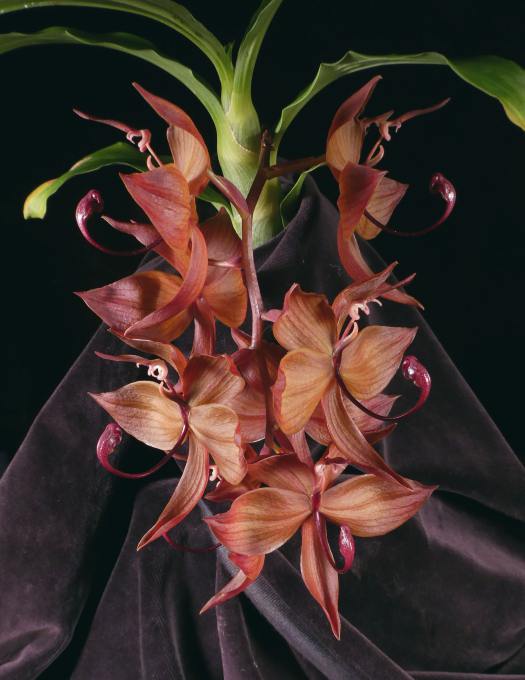 |
In the greenhouse... |
|
Dendrobium smilliaeNative to Queensland, Australia and New Guinea, this is a warm-growing species. It blooms on the prior year's bare canes. It does not seem to repeat blooming on a cane, flowers emerge from near the top. The flowers are non-resupinate (lip at the top pointd downward.) I think that the color combination of this species is spectactular. |
|
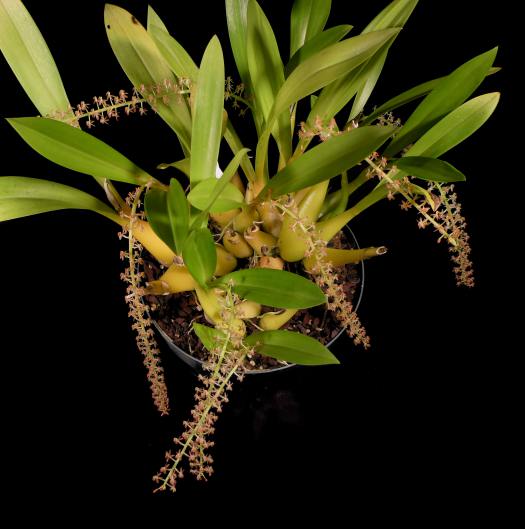
Liparis parvifloraFlowers are tiny but there are lots of them. This species is native to a wide range of Indonesia and the Philippines, with an elevation range of sea level to 2000 m. That suggests to me that I could grow it outside. It's getting on the large side, real estate in my greenhouse is very limited... in the spring, I think that I will be testing the "grows outside" hypothesis. |
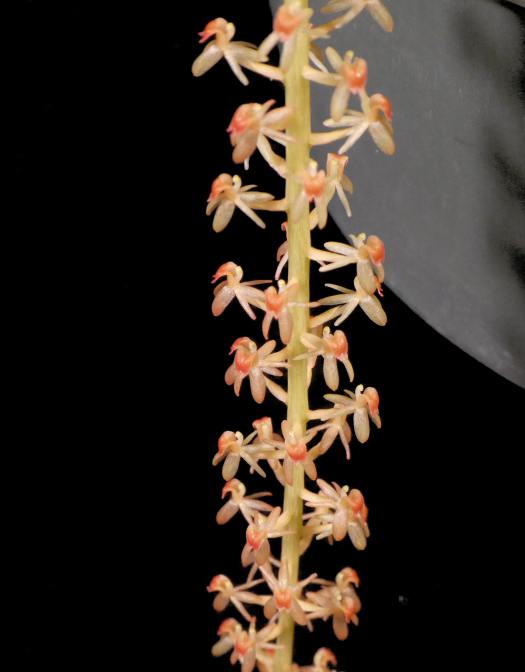 |
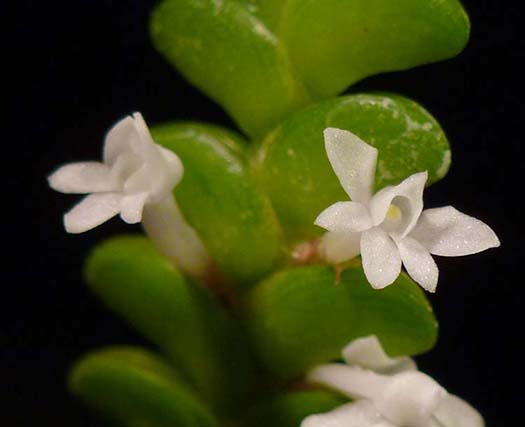 |
|
Angraecum distichumThis just keeps getting better. As it gets larger, the flush blooms are occuring more frequently. Fragrant, especially in the evening. |
|
